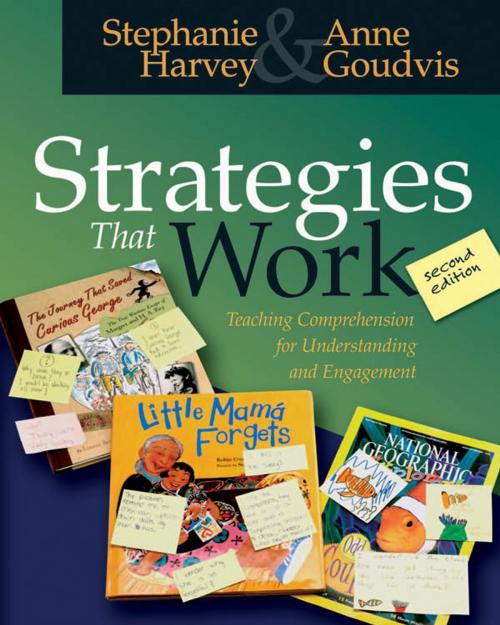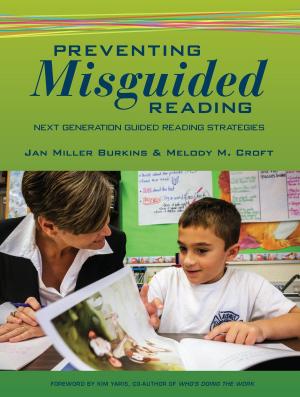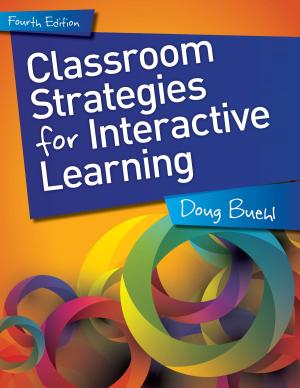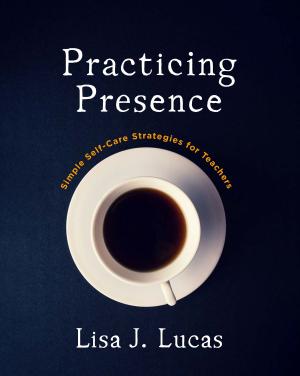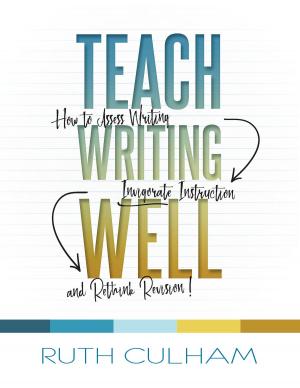Strategies That Work
Teaching Comprehension for Understanding and Engagement
Nonfiction, Reference & Language, Education & Teaching| Author: | Stephanie Harvey, Anne Goudvis | ISBN: | 9781571108487 |
| Publisher: | Stenhouse Publishers | Publication: | January 1, 2007 |
| Imprint: | Stenhouse Publishers | Language: | English |
| Author: | Stephanie Harvey, Anne Goudvis |
| ISBN: | 9781571108487 |
| Publisher: | Stenhouse Publishers |
| Publication: | January 1, 2007 |
| Imprint: | Stenhouse Publishers |
| Language: | English |
Since its publication in 2000, Strategies That Work has become an indispensable resource for teachers who want to explicitly teach thinking strategies so that students become engaged, thoughtful, independent readers. In this revised and expanded edition, Stephanie and Anne have added twenty completely new comprehension lessons, extending the scope of the book and exploring the central role that activating background knowledge plays in understanding. Another major addition is the inclusion of a section on content literacy which describes how to apply comprehension strategies flexibly across the curriculum. The new edition is organized around four sections:
Part I highlights what comprehension is and how to teach it, including the principles that guide practice, a review of recent research, and a new section on assessment. A new chapter, Tools for Active Literacy: The Nuts and Bolts of Comprehension Instruction, describes ways to engage students in purposeful talk through interactive read alouds, guided discussion and written response.Part II contains lessons and practices for teaching comprehension. A new first chapter emphasizes the importance of teaching students to monitor their understanding before focusing on specific strategies. Five lessons on monitoring provide a sound basis for launching comprehension instruction. At the end of each strategy chapter, the authors outline learning goals and ways to assess students' thinking, sharing examples of student work, and offering suggestions for differentiating instruction.
Part III, Comprehension Across the Curriculum is new. Comprehension strategies are essential for content-area reading, where information can be challenging, and presented in unfamiliar formats. This section includes chapters on social studies and science reading, topic study research, textbook reading and the genre of test reading.
Part IV shows that kids need books they can sink their teeth into and the updated appendix section recommends a rich diet of fiction and nonfiction, short text, kid's magazines, websites and journals that will assist teachers as they plan and design comprehension instruction
Through its focus on instruction that is responsive to kids' interests and learning needs, the first edition of Strategies That Work helped transform comprehension instruction for teachers across the country. For them, this new edition will be a welcome extension of that work. Those coming to it for the first time will find a current and essential resource. When readers use these strategies, they enjoy a more complete, thoughtful reading experience. Engagement is the goal. When kids are engaged in their reading they enhance their understanding, acquire knowledge, and learn from and remember what they read. And best yet, they will want to read more!
Since its publication in 2000, Strategies That Work has become an indispensable resource for teachers who want to explicitly teach thinking strategies so that students become engaged, thoughtful, independent readers. In this revised and expanded edition, Stephanie and Anne have added twenty completely new comprehension lessons, extending the scope of the book and exploring the central role that activating background knowledge plays in understanding. Another major addition is the inclusion of a section on content literacy which describes how to apply comprehension strategies flexibly across the curriculum. The new edition is organized around four sections:
Part I highlights what comprehension is and how to teach it, including the principles that guide practice, a review of recent research, and a new section on assessment. A new chapter, Tools for Active Literacy: The Nuts and Bolts of Comprehension Instruction, describes ways to engage students in purposeful talk through interactive read alouds, guided discussion and written response.Part II contains lessons and practices for teaching comprehension. A new first chapter emphasizes the importance of teaching students to monitor their understanding before focusing on specific strategies. Five lessons on monitoring provide a sound basis for launching comprehension instruction. At the end of each strategy chapter, the authors outline learning goals and ways to assess students' thinking, sharing examples of student work, and offering suggestions for differentiating instruction.
Part III, Comprehension Across the Curriculum is new. Comprehension strategies are essential for content-area reading, where information can be challenging, and presented in unfamiliar formats. This section includes chapters on social studies and science reading, topic study research, textbook reading and the genre of test reading.
Part IV shows that kids need books they can sink their teeth into and the updated appendix section recommends a rich diet of fiction and nonfiction, short text, kid's magazines, websites and journals that will assist teachers as they plan and design comprehension instruction
Through its focus on instruction that is responsive to kids' interests and learning needs, the first edition of Strategies That Work helped transform comprehension instruction for teachers across the country. For them, this new edition will be a welcome extension of that work. Those coming to it for the first time will find a current and essential resource. When readers use these strategies, they enjoy a more complete, thoughtful reading experience. Engagement is the goal. When kids are engaged in their reading they enhance their understanding, acquire knowledge, and learn from and remember what they read. And best yet, they will want to read more!
